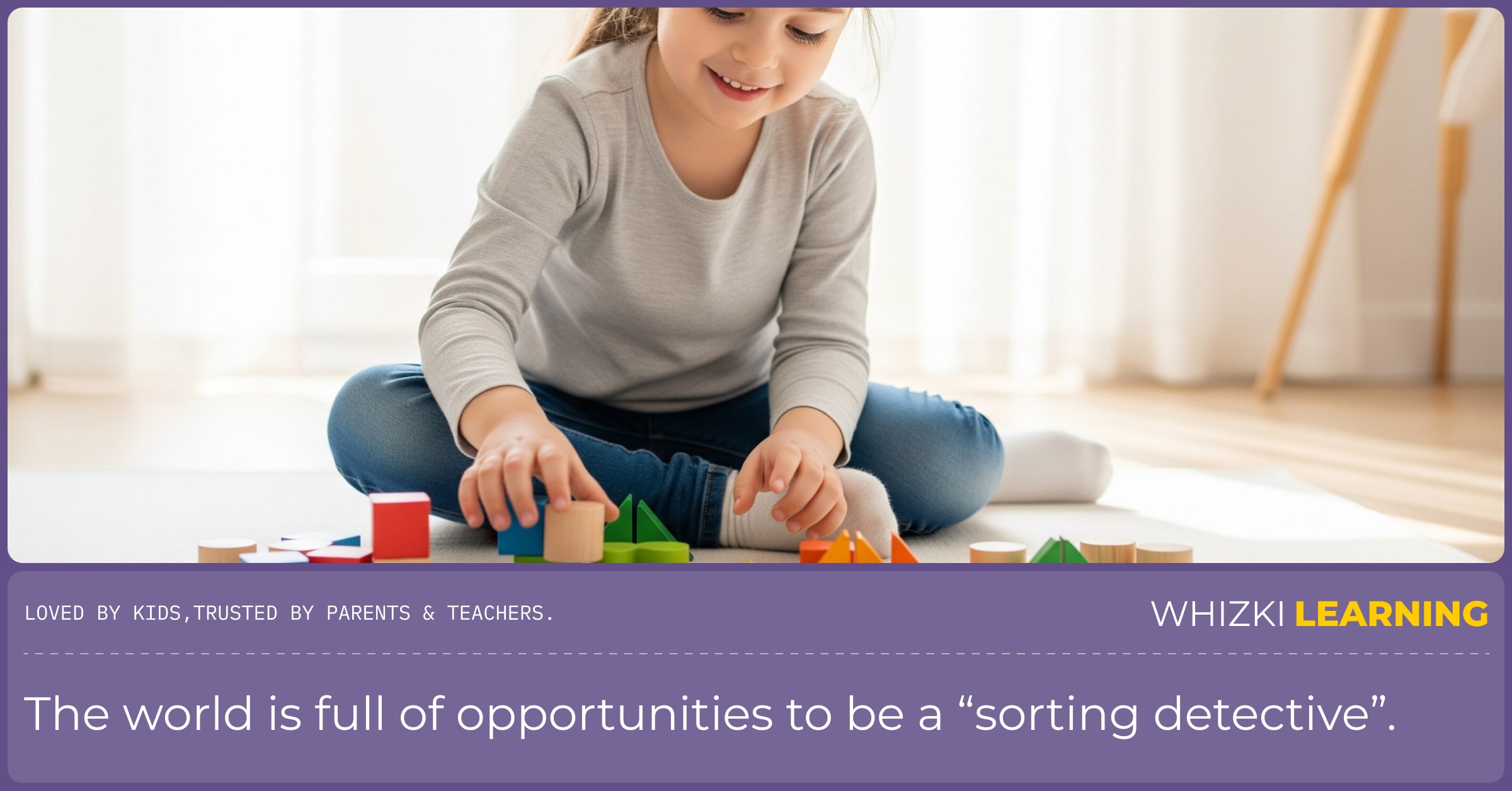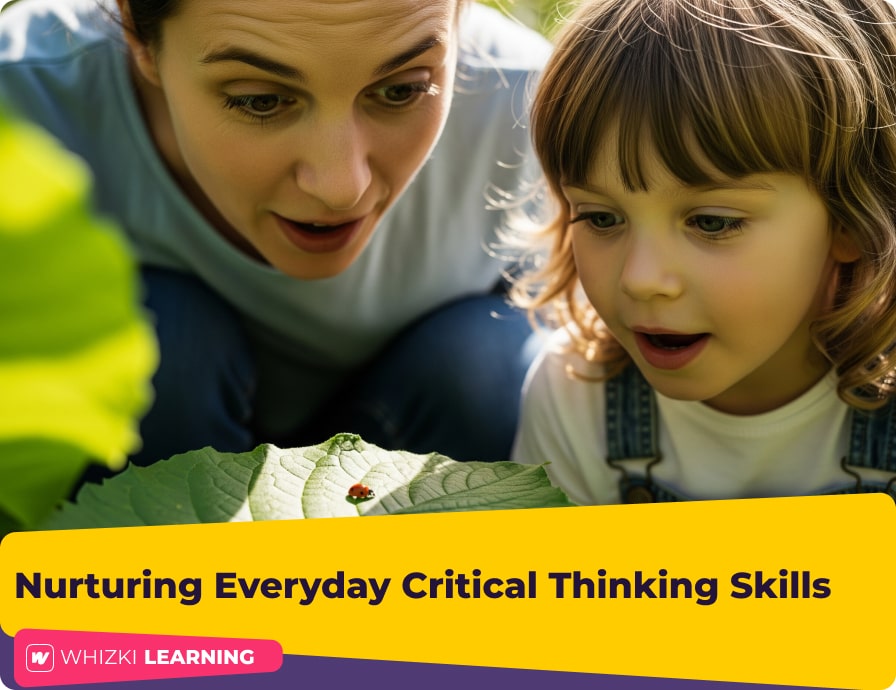It's a phase every parent knows well. It starts with a single, innocent question and quickly becomes a relentless barrage: 'Why is the sky blue?' 'Why do dogs bark?' 'Why... is that cookie round?' The 'Why Phase' can be both delightful and utterly exhausting. But what if we saw it not as a test of our knowledge, but as a formal invitation into our child's developing mind? That endless stream of 'whys' is the sound of a little engine of curiosity warming up. It's the very beginning of critical thinking.
In our fast-paced world, the ability to think critically-to analyze information, see different perspectives, and solve problems-is more than a school skill; it's a life skill. And the good news is, you don't need flashcards or expensive apps to nurture it. The foundations are built in the small, curious conversations you have every single day.
The goal of early education should be to activate the child's own natural desire to learn.- Maria Montessori
This guide is about making a simple but profound shift: from being an 'Answer Machine' for your child to becoming their 'Wondering Partner.' We'll give you five practical, playful habits to help your child move beyond just asking 'Why?' (which often seeks a single, correct answer) to exploring the much more powerful questions: 'How does that work?' and 'What if we tried this?'
The Foundation: Become a 'Wondering Partner'
Our instinct when a child asks 'Why?' is to provide a factual answer. But this can unintentionally shut down the thinking process. When we provide the answer, the conversation ends. When we become a 'Wondering Partner,' the exploration begins. This means getting comfortable with saying, 'Hmm, that is a great question. What do you think?' or 'I'm not sure. How could we find out together?' This shift tells your child that their thoughts are valuable and that the process of discovery is more exciting than just knowing the answer. It's a core tenet of developing a growth mindset.

A How-To Guide: 5 Everyday Habits to Build a Thinking Brain
Five practical, daily habits for parents to help develop their child's observation, analysis, and problem-solving abilities through play and conversation.
Habit 1: The Art of 'I Wonder...' (Cultivating Curiosity)
This is the simplest and most powerful tool. Instead of stating facts, model curiosity out loud. When you gently turn questions back to your child, you empower them to form their own theories.
Instead of saying: 'That's a spider. It has eight legs.'
Try saying: 'Ooh, look at that little creature! I wonder how many legs it has. Should we try to count them together?'
Instead of answering: 'We need rain so the plants can grow.'
Try asking: 'That's a great question. What do you notice happens in our garden after it rains? What do the flowers look like?'
Habit 2: The 'What Do You Notice?' Game (Developing Observation)
Keen observation is the foundation of all critical thinking. You can't analyze what you don't see. Turn observation into a fun, everyday game.
- During story time: 'Look at the bear's face on this page. What do you notice? What do you think he's feeling?'
- On a walk: 'Let's be 'Nature Detectives' for one minute. Let's stand perfectly still and just... notice. What do you hear? What do you smell?'
- With a workbook: A page of 'Find the Difference' in one of our logic puzzles for children is a perfect, structured version of this game. It's a direct workout for their observation muscles, which is key for building focus and concentration.
Habit 3: The 'Sorting Detective' (Learning to Categorize & Analyze)
The ability to group things by their attributes-color, shape, size, function-is a core analytical skill. The world is full of opportunities to be a 'sorting detective.'
Examples:
• Laundry Time: 'Can you be my special helper and find all the socks? Let's make a 'sock mountain'!'
• Putting away groceries: 'Okay, let's put all the cold things in the fridge first. Which of these are cold?'
• Toy Cleanup: 'Let's make a home for all the cars in this basket, and a home for all the blocks in this one.'
This is the exact skill they practice in a more structured way with many skill-building worksheets. They are learning to bring order to chaos, a key component of problem-solving.

Habit 4: The 'Test Your Theory' Lab (Encouraging Experimentation)
Children are natural scientists. We can encourage this by inviting them to form and test their own hypotheses in low-stakes situations.
Examples:
• Building Blocks: 'You have a very tall tower! What do you think will happen if we add one more block on top?' (Instead of 'Be careful, it will fall!')
• Bath Time: 'We have a rubber duck and a bar of soap. Which one do you predict will float? Let's test your theory!'
• Mazes: A page from a puzzle and maze workbook is a perfect 'thinking lab.' When they hit a dead end, you can say, 'Interesting! That path didn't work. What's another path we could test?'
Habit 5: The 'Different Perspectives' Storytime (Building Empathy & Analysis)
Critical thinking isn't just about logic; it's about understanding that there are multiple viewpoints. Storytime is the perfect place to practice this.
How to do it: After reading a familiar story, ask perspective-shifting questions.
• 'We always hear the story from the Little Pig's side. I wonder how the wolf was feeling that day? Why do you think he was so hungry and grumpy?'
• 'Why do you think the stepsisters were so mean to Cinderella? What could have made them feel that way?'
This teaches children to look beyond the surface, analyze characters' motivations, and develop empathy-some of the most advanced forms of critical thought.
Whizki Workbooks: A Playground for the Thinking Mind
While these habits are built in the flow of daily life, sometimes a child needs a quiet, structured space to really flex their thinking muscles. That's where our fun educational workbooks come in. They are not about rote memorization. They are carefully designed playgrounds for the mind.
A maze is a lesson in planning and foresight. A 'Complete the Pattern' page is a workout in logical reasoning. A 'Spot the Difference' activity is a masterclass in observation. These brain booster activities provide the perfect, screen-free opportunity for your child to practice the very critical thinking skills you're nurturing all day long.
The Goal Isn't 'Smart,' It's 'Curious'
Nurturing a critical thinker isn't about raising the child who has all the answers. It's about raising the child who has the best questions, who isn't afraid to say 'I don't know, let's find out,' and who sees the world not as a set of facts to be memorized, but as a fascinating puzzle to be explored. By being their 'Wondering Partner,' you give them the confidence to be the lead detective in the incredible adventure of their own learning.






